- 0086-571-85302990
- sales@greenskybio.com
The process of extracting proanthocyanidins from natural grape seed extract.
2024-11-29

1. Introduction
Grape Seed Extract is a valuable natural product, which is rich in proanthocyanidins. Proanthocyanidins have a wide range of biological activities and potential applications in pharmaceuticals, cosmetics, and food industries. Therefore, the extraction of proanthocyanidins from Grape Seed Extract has become an important research area. This article will comprehensively introduce the process of extracting proanthocyanidins from natural Grape Seed Extract.
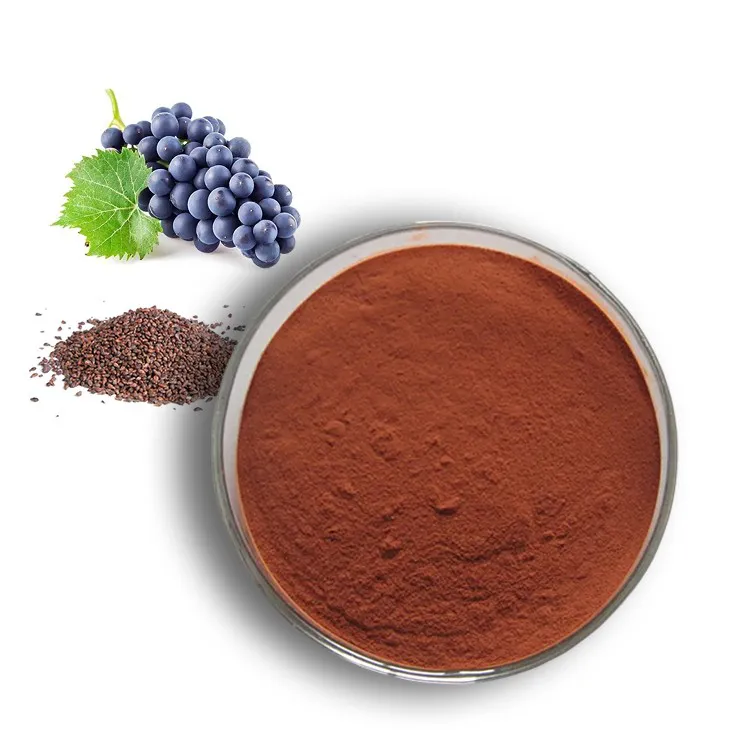
2. Selection and Cleaning of Raw Grape Seeds
2.1 Selection
The first step in the extraction process is the careful selection of raw grape seeds. High - quality grape seeds are essential for obtaining a good yield of proanthocyanidins. Grape seeds are usually sourced from grape - processing industries. When selecting, factors such as the variety of grapes, the origin, and the quality of the grapes are considered. For example, some grape varieties are known to have a higher content of proanthocyanidins in their seeds. Seeds from healthy and ripe grapes are preferred as they are more likely to contain a higher amount of the desired compounds.
2.2 Cleaning
After selection, the grape seeds need to be thoroughly cleaned. The cleaning process aims to remove any impurities such as dirt, debris, and remaining grape pulp adhered to the seeds. This can be achieved by washing the seeds with clean water. Multiple washes may be necessary to ensure complete removal of impurities. Clean seeds not only contribute to the purity of the final product but also prevent any interference during the subsequent extraction and purification processes.
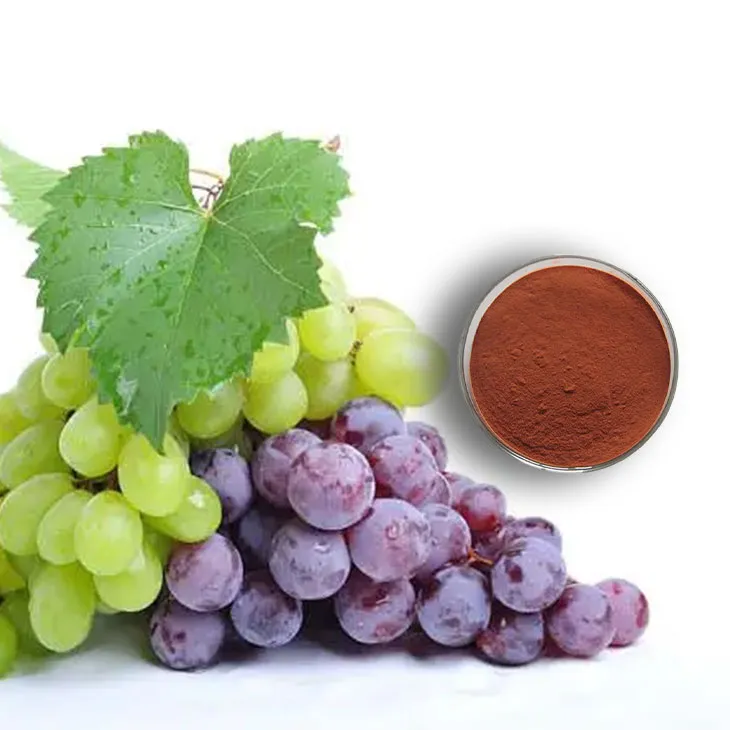
3. Pretreatment of Grape Seeds
3.1 Drying
Once the grape seeds are clean, they are usually subjected to a drying process. Drying is important to reduce the moisture content in the seeds. High moisture content can lead to spoilage and the growth of microorganisms, which can affect the quality of the proanthocyanidins. The drying can be carried out using various methods such as air - drying, oven - drying, or freeze - drying. Air - drying is a simple and cost - effective method, but it may take a longer time. Oven - drying can be more rapid, but the temperature and drying time need to be carefully controlled to avoid over - drying or thermal degradation of the active compounds. Freeze - drying is a more advanced method that can better preserve the quality of the seeds, but it is relatively expensive.
3.2 Crushing
After drying, the grape seeds are crushed into smaller particles. Crushing is necessary to increase the surface area of the seeds, which facilitates the extraction of proanthocyanidins. The crushing can be done using mechanical crushers such as a grinder or a mill. The particle size of the crushed seeds should be appropriate. If the particles are too large, the extraction efficiency may be low as the solvent may not be able to penetrate effectively. On the other hand, if the particles are too fine, it may cause problems such as clogging during the extraction process.
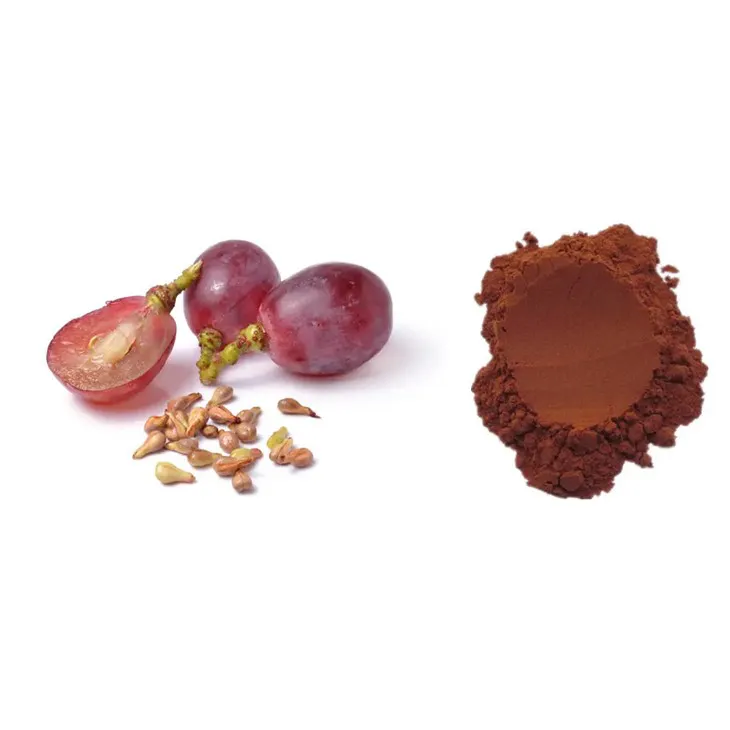
4. Extraction of Proanthocyanidins
4.1 Selection of Extraction Solvents
The choice of extraction solvent is crucial for the extraction of proanthocyanidins. Commonly used solvents include ethanol and water - ethanol mixtures. Ethanol is a very effective solvent for proanthocyanidins extraction. It has good solubility for these compounds and can also help in preserving their biological activity. Water - ethanol mixtures are also often used. The ratio of water to ethanol in the mixture can be adjusted according to the specific requirements. For example, a higher ethanol content may be more suitable for extracting proanthocyanidins with higher hydrophobicity, while a certain amount of water can help in extracting more polar components.
4.2 Extraction Conditions
The extraction process is carried out under specific conditions regarding temperature, time, and solvent - to - material ratio.
- Temperature: The extraction temperature affects the solubility of proanthocyanidins in the solvent. Generally, a moderate temperature is preferred. Too low a temperature may result in slow extraction, while too high a temperature may cause the degradation of proanthocyanidins. For example, extraction at a temperature range of 40 - 60°C has been found to be effective in many cases.
- Time: The extraction time also plays an important role. Sufficient time is required to ensure complete extraction of proanthocyanidins from the grape seed particles. However, if the extraction time is too long, it may lead to the extraction of unwanted impurities and also increase the cost of the process. Usually, the extraction time can range from a few hours to several days depending on the specific extraction system.
- Solvent - to - material ratio: This ratio determines the amount of solvent used relative to the amount of grape seed material. A higher solvent - to - material ratio can generally improve the extraction efficiency, but it also means higher consumption of solvents and subsequent costs for solvent recovery. An appropriate ratio needs to be determined based on experimental studies and economic considerations.
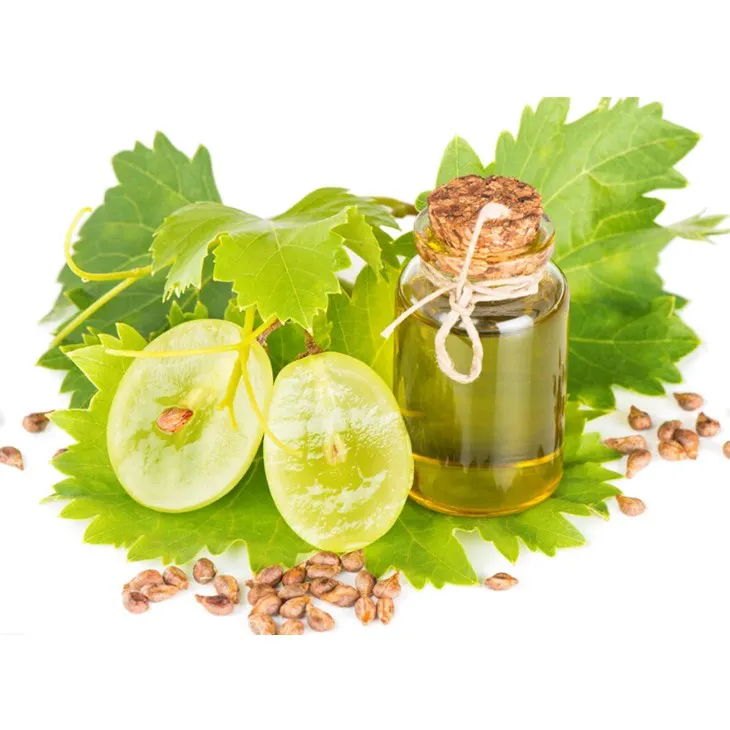
5. Purification of Proanthocyanidins
5.1 Filtration
After extraction, the first purification step is often filtration. Filtration is used to remove large - sized impurities such as undissolved grape seed particles. This can be achieved using filter papers, filter membranes, or filtration equipment such as vacuum filtration devices. Filtration helps in obtaining a relatively clear extract, which is the basis for further purification steps.
5.2 Centrifugation
Centrifugation is another important purification technique. It is used to separate the supernatant containing proanthocyanidins from the sediment. Centrifugation can be carried out at different speeds depending on the nature of the sample. High - speed centrifugation can effectively separate fine particles and impurities from the extract. This step further purifies the extract and improves the purity of the proanthocyanidins.
5.3 Chromatography
Chromatography is a more advanced purification method for proanthocyanidins. There are different types of chromatography that can be used, such as column chromatography, high - performance liquid chromatography (HPLC).
- Column chromatography: In column chromatography, the extract is passed through a column filled with a stationary phase. Different components in the extract will interact differently with the stationary phase and elute at different times. By carefully selecting the stationary phase and the elution conditions, proanthocyanidins can be separated from other impurities. For example, silica gel columns can be used for the separation of proanthocyanidins based on their polarity differences.
- HPLC: HPLC is a more precise and efficient chromatography method. It can provide high - resolution separation of proanthocyanidins. By using appropriate columns and detection methods, pure proanthocyanidins can be obtained. HPLC is often used for the final purification and quality control of proanthocyanidins.
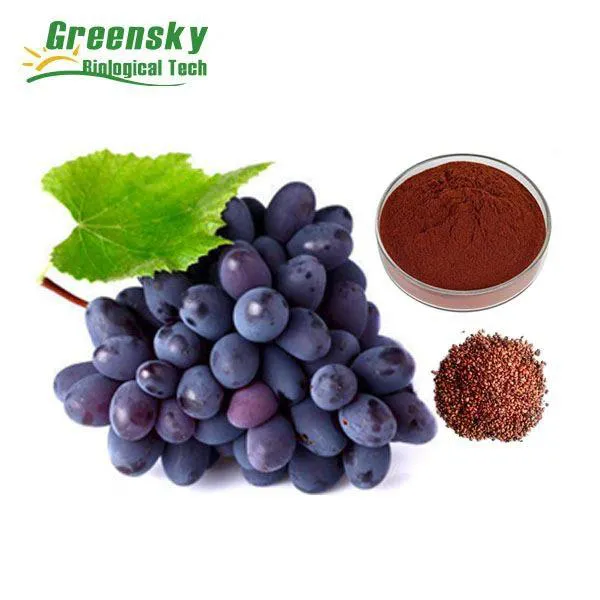
6. Analysis and Applications of Proanthocyanidins
6.1 Analysis
Once the proanthocyanidins are purified, they need to be analyzed to determine their quality and purity. Various analytical methods can be used.
- Spectroscopic methods: UV - Vis spectroscopy can be used to determine the concentration of proanthocyanidins based on their characteristic absorption spectra. Infrared spectroscopy can provide information about the functional groups present in proanthocyanidins.
- Chromatographic methods: As mentioned before, HPLC can be used not only for purification but also for the analysis of proanthocyanidins. By comparing the retention times and peak areas of the samples with standard substances, the content and purity of proanthocyanidins can be determined.
6.2 Applications
Proanthocyanidins have a wide range of applications in different fields.
- Pharmaceuticals: Proanthocyanidins have antioxidant, anti - inflammatory, and anti - cancer properties. They can be used in the development of drugs for the treatment of various diseases such as cardiovascular diseases, cancer, and neurodegenerative diseases.
- Cosmetics: Due to their antioxidant properties, proanthocyanidins are widely used in cosmetics to prevent skin aging, improve skin elasticity, and protect the skin from UV damage.
- Food: Proanthocyanidins can be added to food as a natural antioxidant to extend the shelf - life of food products. They can also be used in functional foods for their health - promoting properties.
7. Conclusion
The extraction of proanthocyanidins from Natural grape seed extract is a complex but well - established process. It involves several key steps including the selection and cleaning of raw grape seeds, pretreatment, extraction, purification, and finally analysis and applications. Each step is crucial for obtaining high - quality proanthocyanidins. With the increasing demand for natural products with health - promoting properties, the extraction and application of proanthocyanidins from grape seed extract are expected to continue to grow in the future.
FAQ:
What are the main steps in extracting proanthocyanidins from Natural grape seed extract?
The main steps include careful selection and cleaning of raw grape seeds, pretreatment such as drying and crushing, extraction using solvents like ethanol or water - ethanol mixtures under specific temperature, time and solvent - to - material ratio conditions, and then purification through techniques like filtration, centrifugation and chromatography.
Why are ethanol or water - ethanol mixtures used as extraction solvents?
Ethanol and water - ethanol mixtures are effective solvents for extracting proanthocyanidins from grape seeds. Ethanol has good solubility properties for these compounds, and the addition of water can sometimes adjust the polarity of the solvent to optimize the extraction efficiency.
What is the role of the pretreatment process?
The pretreatment process, such as drying and crushing, is important. Drying helps to reduce the moisture content, which can prevent spoilage and also make the extraction more efficient. Crushing breaks the grape seeds into smaller particles, increasing the surface area available for the solvent to interact with the proanthocyanidins, thus enhancing the extraction process.
How are impurities removed during purification?
During purification, different techniques are used to remove impurities. Filtration can physically separate larger particles from the extract. Centrifugation helps to separate substances based on their density differences. Chromatography is a more sophisticated method that can separate components based on their chemical properties, thus effectively removing impurities from the proanthocyanidin - rich extract.
What are the applications of the extracted proanthocyanidins?
The extracted proanthocyanidins can be used in various fields. In pharmaceuticals, they may have antioxidant, anti - inflammatory or other health - promoting properties. In cosmetics, they can be used for skin protection and anti - aging purposes. In the food industry, they can be added as a natural antioxidant to preserve food quality.
Related literature
- Extraction and Characterization of Proanthocyanidins from Grape Seeds"
- "Proanthocyanidins in Grape Seed Extract: Extraction Methods and Bioactivities"
- "Optimization of Proanthocyanidin Extraction from Grape Seeds for Industrial Applications"
- ▶ Hesperidin
- ▶ citrus bioflavonoids
- ▶ plant extract
- ▶ lycopene
- ▶ Diosmin
- ▶ Grape seed extract
- ▶ Sea buckthorn Juice Powder
- ▶ Beetroot powder
- ▶ Hops Extract
- ▶ Artichoke Extract
- ▶ Reishi mushroom extract
- ▶ Astaxanthin
- ▶ Green Tea Extract
- ▶ Curcumin Extract
- ▶ Horse Chestnut Extract
- ▶ Other Problems
- ▶ Boswellia Serrata Extract
- ▶ Resveratrol Extract
- ▶ Marigold Extract
- ▶ Grape Leaf Extract
- ▶ blog3
- ▶ blog4
-
Organic konjac powder, Australia.
2024-11-29
-
Chinese Cassia Seed Extract Suppliers.
2024-11-29
-
Suppliers of Organic Diosmin Powder.
2024-11-29
-
Hesperidin with the best reviews.
2024-11-29
-
Organic Epimedium Extract Powder Supplier.
2024-11-29
-
Chaste Berry Extract
2024-11-29
-
Pine bark Extract Powder
2024-11-29
-
Passionflower Extract
2024-11-29
-
Grape Leaf Extract
2024-11-29
-
Yellow Pine Extract
2024-11-29
-
Mango flavored powder
2024-11-29
-
White Willow Bark Extract
2024-11-29
-
Green coffee bean Extract
2024-11-29
-
Europen Bilberry Extract
2024-11-29
-
Oyster Mushroom Extract Powder
2024-11-29





















